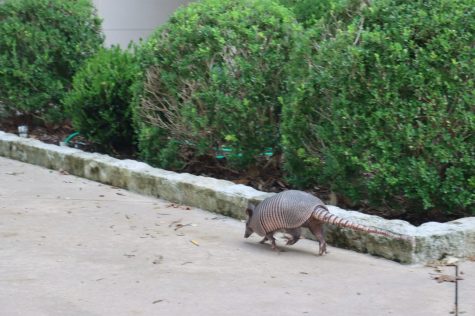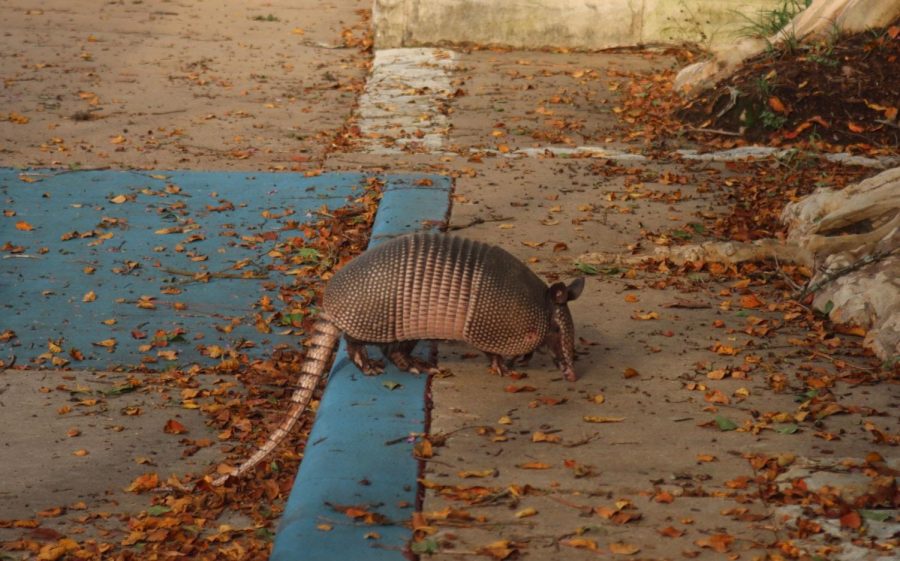Armadillo spotted scurrying around campus
Tex, who roamed campus for about an hour and a half, enjoys the weather.
October 1, 2021
Around 7:20 a.m. on the morning of Sept. 30, English teacher Warren Rawson spotted a creature scurrying past the carpool circle flagpole by the Quad. As Rawson drew closer, he could hear the animal’s claws scratching the pavement as it headed toward the double doors of the Upper School Office.
“I initially thought it was a cat, or an opossum, or even a giant squirrel,” Rawson said. “As I pulled out my phone to take a picture, I saw the bands of armor around its midsection and realized it was an armadillo.”
The armadillo, dubbed Tex by French teacher Shelley Stein (’88) and junior Sophia Jazaeri, was spotted a second time that morning running around the edges of the Plaza. Tex is also the name of a chain smoking professorial French armadillo featured on UT’s open source language site Tex’s French Grammar, which Stein uses in her French classes.
Sophomore Carys LeBlanc was sitting outside at 8:39 a.m. when she and her friends saw a “very fast” brown blur.
“We were studying when we saw an armadillo run through the Plaza,” LeBlanc said. “It looked like a huge rat with a shell.”
From the Plaza, the armadillo made its way into a bushy area adjacent to the window of the Parent’s Desk. Then, as students approached it, Tex scurried into a hole in a fence.

Armadillos are normally nocturnal creatures, so Tex’s scuttling about in broad daylight indicates that it may have been rabid. Yet rabid armadillos also generally approach humans to infect through direct contact—which may also spread leprosy, salmonella and tapeworms. Tex fled from the people who drew near or attempted to photograph it.
Because LeBlanc had never seen an armadillo before, watching Tex roam the campus seemed surreal to her.
“It looked completely different than I had thought armadillos had looked,” LeBlanc said. “It was huge, and its tail was at least the length of its body.”
After about an hour and a half of romping around campus, Tex left by hopping into a gutter near the tent along Westheimer Road.
Armadillos are known to burrow and tend to inhabit areas with cracks and crevices for protection from predators and harsh weather. In addition, armadillos are occasionally active during daylight hours after a rainstorm and in cooler weather, ideally under 85 degrees Fahrenheit. Tex had ideal weather conditions for its excursion because the temperature was 75 degrees and it had rained the previous day.
“I smiled while I watched it scurry through the bushes,” Rawson said. “Who doesn’t enjoy seeing the ‘official state small mammal of Texas’ on a Thursday morning?”
Additional reporting by Lucy Walker.







Dayton Voorhees • Oct 5, 2021 at 9:42 AM
I am fairly certain that I saw a dead armadillo while exiting campus yesterday. It was on the road and my grandmother pointed it out. I told her that there where no armadillos in this part of town! Hopefully these aren’t the same armadillos!